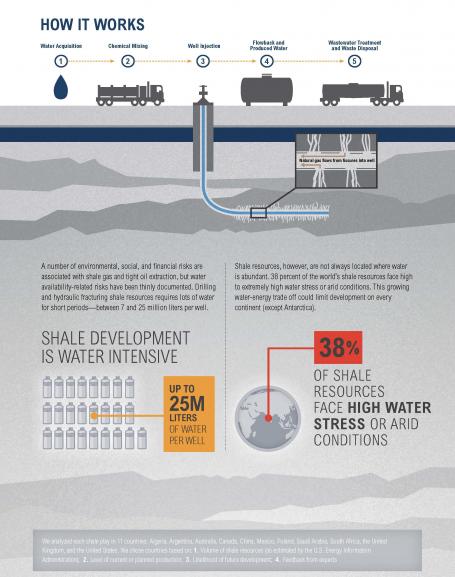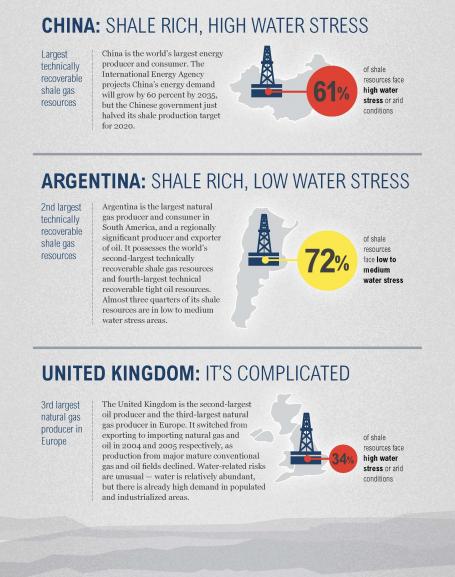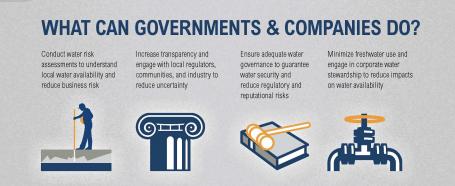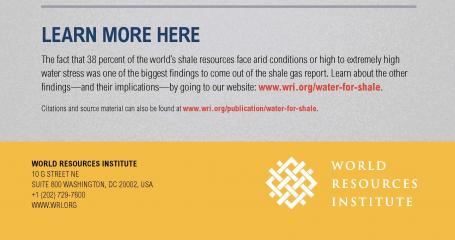Infographic: Protecting Water Security, Promoting Energy Security
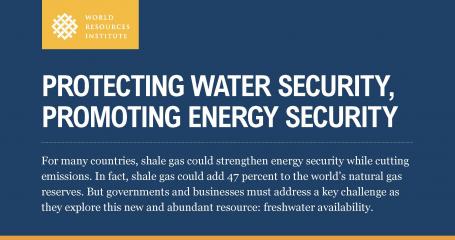
For many countries, shale gas could strengthen energy security while cutting emissions. In fact, shale gas could add 47 percent to the world’s natural gas reserves. But governments and businesses must address a key challenge as they explore this new and abundant resource: freshwater availability.
Learn how securing water and shale gas could strengthen energy security while cutting emissions.
Our related report, Global Shale Gas Development: Water Availability & Business Risks, analyzes water availability across all potentially commercial shale resources worldwide. It also reveals that water availability could limit shale resource development on every continent except Antarctica.
This infographic, based on the related report's data, depicts the following key findings:
-
38 percent of the world’s shale resources face high to extremely high water stress or arid conditions.
-
386 million people live on land above shale plays—increased competition for water and public concern over hydraulic fracturing is more likely in densely populated areas.
-
In China, 61 percent of shale resources face high water stress or arid conditions.
-
In Argentina, 72 percent of shale resources face low to medium water stress.
-
In the United Kingdom, 34 percent of shale plays face high water stress or arid conditions.

